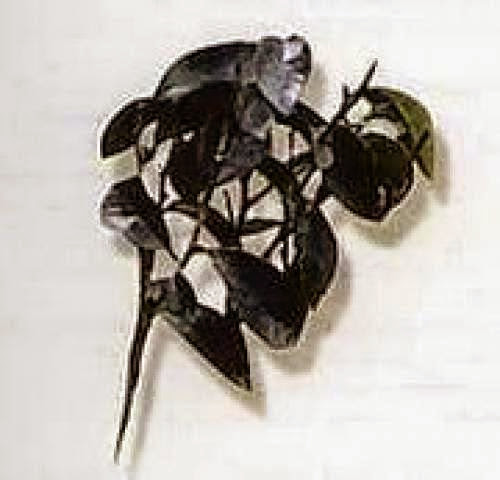It is true that the dot in the center of a circle has been regarded from old as an image of the Sun, which it is in fact, since in a physical sense the Sun is the Center, or "the Heart", of the World; and this is the reason why this figure is even today the astrological sign of the Sun. But against the archaeologists' view which only sees this meaning in it, it actually has a far more vast and profound connotation, as from the viewpoint of all of the ancient traditions, the Sun is but another symbol of the true world center- that is, the Divine Principle.
With this, it becomes clear what the relation between the center and the circumference, or whatever they may represent, is one of subordination from the latter to the former, since the circumference cannot possibly exist without its center, while the center is absolutely independent from the circumference.
Sometimes the dot can be surrounded by several concentric circles, in which case they will represent the various states or degrees of manifestation hierarchically arranged according to their greater or lesser distance from the center.
Such is the case with, for example, the schematic representation of Jambudvipa of the ancient Hindu tradition, which can be said to represent from ancient India to the Earth to the Solar system to our galaxy, all in one. See below for an image and description of it.
In the center of Bhu-mandala is the circular "island" of Jambudvipa, with nine varsha or subdivisions. These include Bharata-varsha, which can be understood in one sense as India and in another as the total area inhabited by human beings. In the center of Jambudvipa stands the cone-shaped Sumeru Mountain, which represents the world axis and is surmounted by the city of Brahma, the universal creator.
Now if the circumference in a circle is represented as traveled in a given direction, it will become the image of a cycle of manifestation such as the ones found in the Hindu tradition and other traditions from both the Old and the New World
Also, if the circumference is connected to the center by radios in the manner of the strokes of a wheel, the relation becomes even more explicit. Such is the case with the quartered circle below - the simplest of them all - or, for that matter, with any circle with any number of radios.
In this case, the divisions will correspond to the different periods or phases into which the cycle is divided and of course, they will belong, according to their particular lengths, to different scales: for example, the four main parts of a day, the four phases of the Moon, the four seasons of the year and also, according to the conceptions found in the traditions from both India and Central America and also in those from the classical Greek and Roman traditions, the four Ages of Mankind.
Additional Notes: Puranic description
[According to Puranic cosmography, the earth is divided into seven concentric island continents (sapta-dvipa vasumati) separated by the seven encircling seas, each double the size of the preceding one. The seven continents of the Puranas are stated as Jambudvipa, Plaksadvipa, Salmalidvipa, Kushadvipa, Krounchadvipa, Shakadvipa, and Pushkaradvipa. These continents are said to be surrounded by seven oceans, consisting respectively of salt-water, sugarcane juice, wine, ghee, curd, milk and water (Agni Purana 108.1-2, Matsya Purana Ch 121-122).
Continent Jambudvipa (Rose Apple Island), also known as Sudarshandvipa, forms the innermost concentric island in the above scheme of Puranic dvipas or continents. Its name is said to derive from Jambu tree (another name for the Rose Apple, a kind of black plum). The fruits of the Jambu tree are said to be as large as elephants and when they become rotten and fall upon the crest of the mountains, a river of juice is formed from their expressed juice. The river so formed is called Jambunadi (Jambu river) which flows through Jambudvipa, whose inhabitants drink its waters. Insular continent Jambudvipa is said to comprise nine varsas or zones and eight mountains.
In Hinduism, the Markandeya Purana portrays Jambudvipa as being depressed on its south and north and elevated and broad in the middle. The elevated region forms the varsa named Illa-vrta (or Meruvarsa). At the center of Illa-Vrta lies the golden Mount Meru, the king of mountains and the support of the planet earth. On the summit of Mount Meru is the vast city of Lord Brahma, known as Brahmapuri. Surrounding Brahmapuri are the cities of Lord Indra and of seven other devatas or demigods.]
Now, you may also want to read...
Sacred Science III
But whether the circle represents God, or the world, or time, it is still its Center, and its relation to the circumference, that are essential.
Also;
Sacred Science IV
To Hindu scriptures had on its top the so-called Brahma's Paradise at the beginning of the current cycle of Humanity. So Paradise can be said to be situated both inward (if in a circle) and upward (if on a cone).ERQ3FCHKA2WB
Credit: magical-poetry.blogspot.com



















